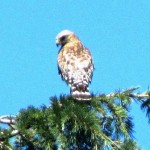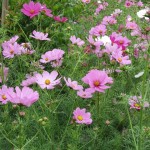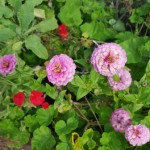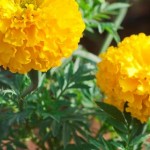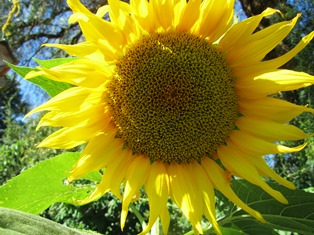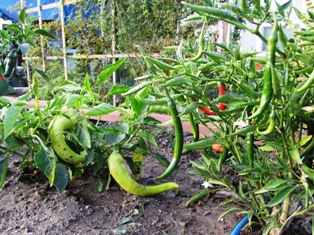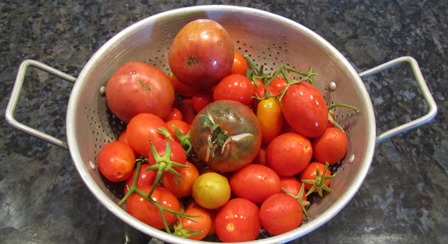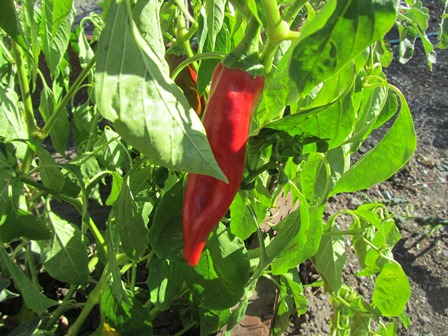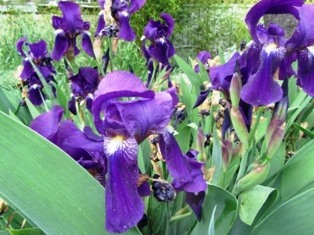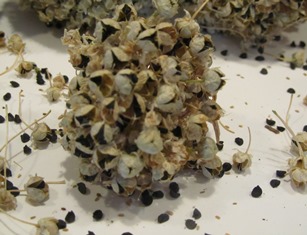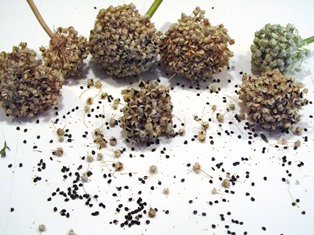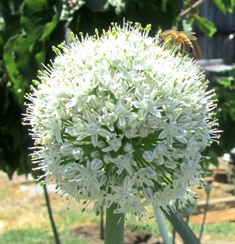How to Attract Birds to Make Your Garden a Sanctuary
A Chinese proverb states that “If I keep a green bough in my heart, then the singing bird will come.” I think I was born with that green bough in my heart because I have always loved birds–and not only the songbirds.
By offering food, water, and safe and dry housing as well as blooms for every season (flowering annuals, perennials, herbs, bulbs, and fruits and berries), I am able to attract many different birds into my garden.When birds are present, especially the songbirds, the garden becomes a special sanctuary.
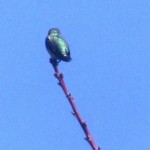
A hummer’s iridescent feathers shimmer as it perches in sunlight at the end of an apricot tree branch
I hang feeders and fill them with various types of seed and suet cakes as well as syrup for hummingbirds. Food attracts local and migratory birds flying through this time of year. It’s best to choose a wide sampling of foods such as seeds, nuts,hulled sunflower, safflower, Nyjer thistle, peanut, millet, fruit, berries, raisins, and meal worms to draw interesting bird traffic.
Some of the birds we regularly see include scrub jays, wrens, finches, sparrows, red-tail hawks, mockingbirds, quail, mourning doves, robins, barn owls, hummingbirds, and crows.
With food scarce in the wild, the birds visit the hanging and platform feeders. For ground feeders like mourning doves, I put out a large saucer under the apple tree and, yes, I leave a few apples on the tree for the birds to peck. For a list of birds and the types of seed and other foods they consume, see, https://www.wild-bird-watching.com/Bird_Seed.html
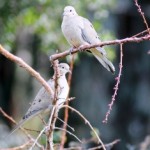
Mourning doves mate for life; these two are joined at the feeder by a third who has lost his or her partner
Some of our winged visitors stick around to mate and build nests in climbing rose bushes, brush piles, trees, or one of the many birdhouses we’ve hung. Only the owl basket high in the pepper tree remains empty, but we’ve heard a lot of hooting at night so we’re optimistic that owls will take up residence here. We live close to designated agricultural lands and the empty field behind us has a lot of mice–their favorite food.
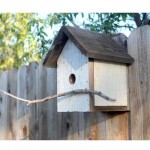
My hubby built this birdhouse from a fence board. Not all birds will take up residence in a house, but many will.
Birds build nests in backyard birdhouses and brush piles as well as in trees, shrubs like climbing roses, and under the protected eaves of buildings (mourning doves especially seem to like these). Hummingbirds will build their tiny cup-like nests in shrubs (we found one in our Cecil Brunner climbing rose bush) and trees, from 10 feet and up in locations where wind isn’t a threat.
A water source is important for attracting birds since they both drink and bathe in the water fountains and bird baths of backyards and gardens.
If you provide food, water, and a safe and dry shelter for the birds to eat, breed, and nest, you will be rewarded for not only the singing birds will come but other interesting species as well.
_______________________________________________________
If you enjoy reading about living close to the earth and a good yarn, check out my Henny Penny Farmette series of cozy mysteries: A BEELINE TO MURDER, THE MURDER OF A QUEEN BEE, and my latest, A HIVE OF HOMICIDES.
These mysteries are chock-full of tips for keeping chickens and bees, growing heirloom fruits and vegetables, and backyard DIY projects. For more information, click on the URL.
A HIVE OF HOMICIDES
Time to Harvest Seeds from Annuals
If you are like me, you hate to see anything wasted. Case in point, seeds from a summer flower garden.
Walking around my farmette this time of year, I see many seed pods on flowers that I can take off, dry, and store. Scores of my flowering plants are perennials that come back again next year, but may others are annuals, grown throughout one season.
Just because they are annuals doesn’t mean that I have to buy new seed in order to grow them next year. No. I will gather their seeds (found in flower heads or seedpods or the calyx, located at the base of the flower on the plant). I can then pull the annual and toss the plant biomass into compost pile. The seeds I’ve collected will be further dried and stored in paper envelopes labeled with the date collected and the plant’s name and color.
In the plant store you’ll find hybridized plants along with those NOT MARKED as F1 hybrids. Seeds you collect from the non-hybridized plants will come back true to their parents the next year. Non-hybrids include heirloom, open-pollinated plants that some gardeners (myself included) prefer for their gardens.
This year, I sowed zinnia seeds that I had collected two years ago. Tossing them into a bare area of the garden, I forgot about them. When they not only grew but bloomed profusely, I felt immensely pleased with myself for taking the time to collect that seed.
Zinnias are annuals. Their tiny seeds are located in the flower heads. They can be removed once the plant has finished blooming and dried.
Nasturtiums are annuals that drop their seeds (the size of a pinto bean) and will often re-seed where they’ve grown before. I like to collect these into paper envelopes and label according to color and whether they grow as a vine or bush. They actually prefer poor soil and bloom well in full sun (less so, in shade). Nasturtiums are also edible flowers–just wash, dry, and toss into a salad or use as a garnish.
Petunias are lovely annuals that carry their seed in the calyx (just under the flower). The calyx swells with seeds so you’ll want to remove the dead flowers along with the part of the stem that includes the calyx (top of stem) . Pull off the petals. When the calyx dries and splits open, you’ll see the seeds. Save these for planting.
Marigolds add splashes of bright yellow color to your garden. Remove the dead flowers and save part of the thickened stem beneath the flower head (the calyx). Split open the calyx at the top of the stem to find the long, slender seeds. Dry and save these for your next year’s flower garden.
There are lots of other annuals that you can grow in a flower garden if you take the time to harvest and dry their seeds. Consult a gardening guide or plant grower’s catalog to learn more about the annuals you might want to grow. Then give seed harvesting a try so that you’ll get all your favorite blooms in a future garden.
____________________________________________________
If you enjoy reading about gardening and other farming topics, check out my newest novel, A HIVE OF HOMICIDES. It contains not only an entertaining mystery but also tips for growing plants and trees, keeping chickens and bees, and making delicious farm-wholesome foods.
Click here to see more: http://tinyurl.com/ya5vhhpm
Giant Sunflowers Brighten a Garden, Cornfield, or Wall
Ralph Waldo Emerson once observed, “The earth laughs in flowers.” Among the many flowers I plant around the Henny Penny Farmette each year, sunflowers are my favorites.
What’s not to love about these gorgeous beauties that inspired master artists like Van Gogh, Monet, and Gauguin as well as farmers like my grandmother who put them in fruit jars and crockery to brighten the rooms of her Missouri farmhouse?
I like to grow smaller ones at the back of a flower bed and the giant ones against walls or at the back of my patch of summer corn.

These sunflowers stand about 12 feet tall and produce several heads. Heritage varieties produce several heads.
Giant sunflowers need space to grow to full size since they will grow well over six feet. In my garden, they tower over the corn. Bees love them for their pollen. Kids love them when the foliage of the plants create a secret fort or a fairy circle. Humans, birds, and squirrels love them for their seeds.
For best results, plant giant sunflowers at the back of a garden. They need good soil and full sun. Plant when the danger of frost has past. A rule of thumb to follow is to plant them about one inch deep and six inches apart. While the seeds are germinating, keep the soil moist.
Later on, when the plants stand about three inches tall, you can thin them. Leave about one foot between each plant. This enables a strong root system for form. The stalks will become sturdy and measure about three to four inches in circumference when fully grown.
First come the gorgeous petals in green to yellow and then bright yellow. As the bees pollinate the florets and they drop, the seeds will mature. Seeds are either gray or brown in color.
I always cut the heads when the seeds are plump, firm, and begin to drop. I let the heads dry well in the sun for days before I remove the seeds. Fully dry seeds can be stored in containers for human consumption or to be fed to the squirrels and birds. Don’t forget to save some for planting in next year’s garden.
* * *
If you enjoy reading about farmette topics (including gardening, beekeeping, and delicious recipes), check out my cozy mysteries A BEELINE TO MURDER and also THE MURDER OF A QUEEN BEE in the Henny Penny Farmette series (from Kensington Publishing).
These novels are available through online retailers such as Amazon, Barnes & Noble, Kobo Books, and Walmart as well as from traditional bookstores everywhere.
See, http://tinyurl.com/hxy3s8q
Now available in mass market paperback, this debut novel launched the Henny Penny Farmette series of mysteries and sold out its first press run.
See, http://tinyurl.com/h4kou4g
The second cozy mystery in the Henny Penny Farmette series, available Sept. 27, 2016, is now available on Net Galley (netgalley.com) for professionals and readers who write reviews.
Some Like It Hot
When it comes to growing and eating peppers, many people will opt for the sweet, mild peppers while others prefer the ones with heat. The reasons are varied but may have to do with factors such as cultural (we eat what’s in our environment or what we’ve grown up eating), genes (yes, they play a role in how we taste), and the adrenalin (some folks experience a rush) that can come from eating spicy hot cuisine.
A compound known as capsaicin is the active ingredient that provides the heat in hot chili peppers. Capsaicin is most often found in the light-colored ribbing known as pith. The seeds may contain a little capsaicin but taste hot most likely because of contact with the pith.
Capsaicin heat is measured on the Scoville Scale as Scoville Heat Units (SHU). An Anaheim chili pepper might have 500-2,500 SHU, for example, whereas a cayenne pepper might measure upwards of 30,000-50,000 SHU. Then, there are the tiny habanero peppers that can exceed 100,000 SHU. The hottest peppers in the world measure beyond 1 million SHU.
If you like it hot, try growing some heirloom peppers such as the Hungarian Yellow Wax or the tiny Scotch Bonnet, so appreciated in Caribbean cuisine.
* * *
If you enjoy reading about gardening, keeping bees, raising chickens, and creating delicious recipes, you might want to check out my novels from Kensington Publishing. The Henny Penny Farmette series of cozy mysteries are available online and in tradition bookstores everywhere, in hardcover, kindle, and mass market paperback formats.
The Murder of a Queen bee will be released September 29, 2016 in hardcover and kindle formats and can be pre-ordered. See, http://tinyurl.com/j9vh7vr
Check out my article about “How to Make a Lavender-Sage Smudging Stick.” See, http://tinyurl.com/jds38e8
Finding Treasures in the Seed Catalogs
As a member of the grow-your-own-food movement, I pore over seed catalogs this time of year to search for heirloom vegetables that I want to grow on my farmette. If you’ve ever been inspired by the heirlooms (and not just tomatoes) displayed at a farmer’s market, you know what I mean.
Some wonderful heirlooms have fallen out of favor over the years and through generations. That’s a shame for those of us interested in maintaining the widest possible plant diversity. Gardeners often can find lots of heirloom tomatoes such as Cherokee Purple, Brandywine, Mortgage Lifter, and the “blue” tomatoes, including Indigo Apple. However, finding a great variety of heirloom vegetable seedlings might not be as easy as locating the tomatoes. That’s where rare seeds come in to play.
Seed companies that offer myriad heirloom varieties of vegetables and herbs send out their catalogs around mid-January each year. But their seed offerings can be perused and purchased online as well. Some of my favorite seed companies and their websites include:
Territorial Seed Company, http://www.territorialseed.com/
Baker Creek Heirloom Seeds, http://www.rareseeds.com/
Heirloom Seeds, http://heirloomseeds.com
Sustainable Seed Company, http://sustainableseedco.com/
Annie’s Heirloom Seeds, http://www.anniesheirloomseeds.com/
High Mowing Organic Seeds, http://www.highmowingseeds.com/
Eden Brothers Seed,nhttp://www.edenbrothers.com/store/heirloom_seeds.htm
Victory Seeds,http://www.victoryseeds.com/main_vegies.html
I’ve already removed empty cell packs, potting soil, and ice cream sticks(for plant labels) and placed them on the patio in preparation for starting my own seedlings from seed.
Once the seeds are planted in the cells, I’ll nurture along the seedlings until they are ready to go in the garden (after all chance of frost has passed). Then, Mother Nature will take over. I’ll enjoy sampling new varieties and saving seeds from those I want to grow again.
Collecting and Storing Sunflower Seeds for Next Year’s Garden
Drying heads of sunflowers and storing the seeds is easy. If your sunflowers have dry heads, ranging in size from saucers to large dinner plates, and they have turned brown and most of the petals have fallen off, the seeds are ready for harvesting.
Simply place a paper bag over the drying head and band it or tie with string to keep the birds and squirrels from foraging. Trust me, they’ll eat all your seeds if you permit it. The bag keeps the seed from dropping onto the ground to be foraged by wildlife or to generate new plants.
I like to the cut off the head, leaving eight or so inches of stem on it. This way, there is stem to tie and hang so that the head is positioned upside down in a bag. This position can facilitate the drying and captures all the seed while hanging in a drying shed. Retain this bag of seeds for replanting. The seeds are how the sunflower reproduces itself. Sunflower heads can hold thousands of seeds, depending on the size.
A word of caution here: don’t harvest the seeds and leave them drying in a tray in your shed the way I did. That will attract rodents. A coffee can with a plastic lid works great for storing sunflower seeds.
The best seeds for snacking are the gray and white striped sunflowers. There are other types of seed–for example, a black one and grayish-white seed, but the striped seeds are delicious. After you chew open the hull and spit it out, there’s a lovely seed inside it that tastes great and is nutritious.
Gathering Seed for Next Year’s Garden
The sounds of summer around our farmette have grown quieter. It’s mid-August and the neighborhood children have returned to school. I miss their laughter. I miss the delight on their faces at seeing the chickens and the honeybees. I miss keeping them company at their lemonade stand.
But I admit to the secret pleasure of solitude and quiet, though it isn’t really silence. It’s the peaceful clucking of chickens and the twitter of songbirds as I gather seed from plants that have bloomed and dried, such as the cosmos, nasturtiums, sunflowers, and wisteria.
The wisteria vine that exploded in growth of long, green tendrils during spring and early summer and graced us with bracts of purple perfusion now hold heavy pods. The pods contain seeds that can be dried and planted for new vines next year.
The sword-shaped leaves of the irises are dry–their blooms a memory from early spring. I’ve already cut their long leaves back into four-inch fans and will dig some of the rhizomes for replanting in other beds around the farmette.
The sunflowers that the bees love to forage on have gone to seed. Those seeds will become next year’s plants, but some we’ll save for the squirrels.
The red and yellow onions have developed seed pods on long shoots now. I’ll plant those in raised beds in the fall for a spring crop of onions.
Yes, the dog days of summer have come around again. But the growing season continues. End of summer gives rise to autumn when grapes, persimmons, pumpkins, figs, and pomegranates ripen. On the farmette, there is always another season and other crops to look forward to with anticipation. It’s the good life.
Giant Sunflowers Provide Food and Fun for Everyone
Giant sunflowers need space to grow to full size; they can reach six or more feet tall. Bees love them for their pollen. Kids love them when the foliage of the plants create a secret fort or a fairy circle. Humans, birds, and squirrels love them for their seeds.
For best results, plant giant sunflowers at the back of a garden. They need good soil and full sun. Plant when the danger of frost has past. A rule of thumb to follow is to plant them about one inch deep and six inches apart. While the seeds are germinating, keep the soil moist.
Later on, when the plants stand about three inches tall, you can begin to thin them. Leave about one foot between each plant. This can enable a strong root system for form. The stalks will become sturdy and measure about three to four inches in circumference when fully grown.
First come the gorgeous petals in green to yellow and then bright yellow. As the bees pollinate the florets and they drop, the seeds will mature. Seeds are either gray or brown in color.
I always cut the heads when the seeds are plump, firm, and begin to drop. I let the heads dry well in the sun for days before I remove the seeds. Fully dry seeds can be stored in containers for human consumption or to be fed to the squirrels and birds.
* * *
If you enjoy reading about farmette topics (including gardening, beekeeping, and delicious recipes), check out my cozy mysteries A BEELINE TO MURDER and also THE MURDER OF A QUEEN BEE in the Henny Penny Farmette series (from Kensington Publishing).
These novels are available through online retailers such as Amazon, Barnes & Noble, Kobo Books, and Walmart as well as from traditional bookstores everywhere.
See, http://tinyurl.com/hxy3s8q
Now available in mass market paperback, this debut novel launched the Henny Penny Farmette series of mysteries and sold out its first press run.
See, http://tinyurl.com/h4kou4g
The second cozy mystery in the Henny Penny Farmette series, available Sept. 27, 2016
A Drought Is No Way to Dry Onions
With water use restricted in many counties because of the terrible drought, my garden is withering. Everyone in the Bay Area has to do their part. My onions look particularly pathetic.
In July, I polished a mystery I had hoped to sell. Mid-month, BEELINE TO MURDER sold to Kensington Publishing in New York as the first in a three-book deal. That meant I had to get cracking on the second book.
I forgot the onions. Poor things. The tops fell over and wilted, the bottoms swelled and stopped. A few succumbed to the soil organisms and bugs.
August rolled around and I looked over the patch of brown stems and the heads that had gone to seed and vowed to dig everything out. But then . . . I got an offer to write a short nonfiction book that tied into the Law of Attraction, one of my favorite subjects. The onions had to wait for another 20 days until I cranked out that project.
Yesterday, my husband harvested the onions. Some have to be tossed because of bottom rot. Anything ignored will wither and die–that’s an axiom of gardening I’ve known since forever. So, the onions are gone, but their seeds are plentiful (thousands), so this fall I will plant a new crop of onions and another in the spring and pray for rain.
Harvesting Seeds from Onion Heads
The red and yellow onions I planted during winter here on the farmette have produced lots of fat bulbs. Now that warm weather has arrived, the plants have sent up spikes with a flower head in a process called bolting.
I’ve been using the onions in culinary creations. Now that they are bolting, I’m saving the seed heads for my next round of planting (when the weather gets cooler again).
When the seed heads I’ve collected have dried a bit, black seeds will spill out. I shake them onto paper and then store them in paper envelopes where they can dry out even more.
The benefits of growing onions from seed rather than sets (also called seedlings) is that they perform better, are less susceptible to disease, bulb up somewhat quicker than seedlings, and store better. The seeds germinate quickly (7 to 10 days) and may be eaten in as early as 8 to 10 weeks.
Growing onions is easy. Broadcast your seed in a prepared bed when the weather is warm and all danger of frost has passed. Barely cover with soil (roughly 1/4 inch) and keep damp until seeds have germinated. If you prefer, start some onion seeds in flats to set out in the garden as seedlings.
Harvest bulbs throughout the growing season or wait until the tops flop over. Store onions in the refrigerator in a nylon stocking wrapped individually between onions to maintain freshness. The National Gardening Association has some good tips for harvesting and storing onions. See http://www.garden.org/foodguide/browse/veggie/onions_harvesting/501.
With so many onion types from which to choose, decide how you’ll use each in the kitchen and then grow various heirloom types, depending on purpose and flavor. And . . . don’t worry if next spring, you discover your onions bolting. It’s a good thing to have a seed source for such an important kitchen staple.
 Facebook
Facebook Goodreads
Goodreads LinkedIn
LinkedIn Meera Lester
Meera Lester Twitter
Twitter







